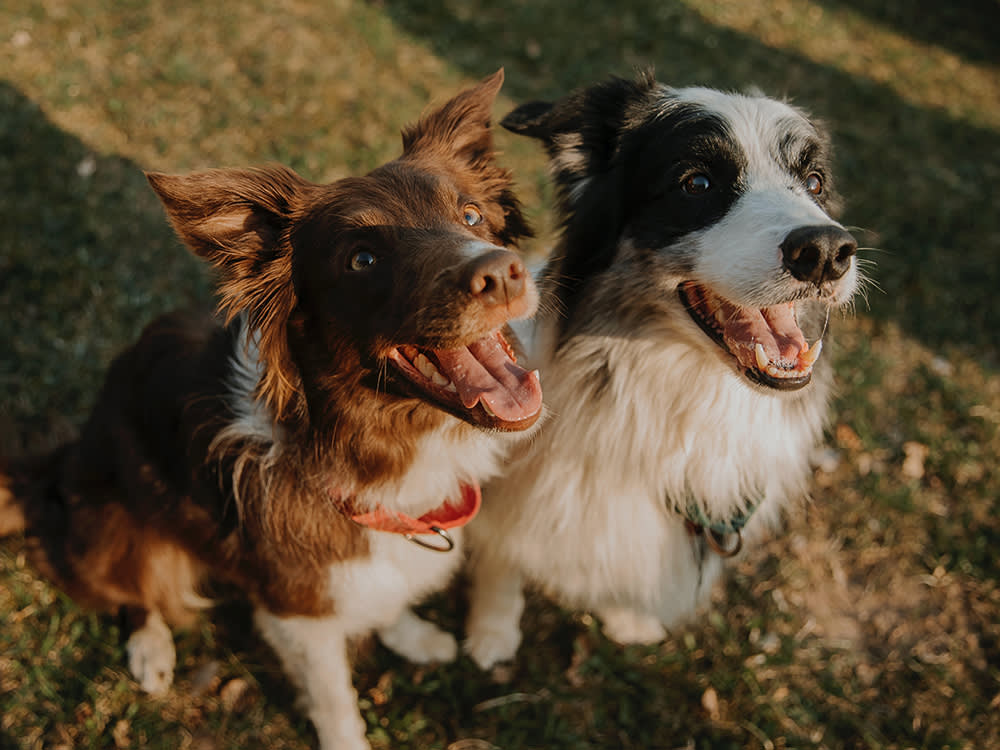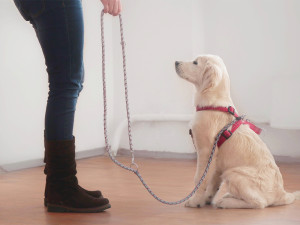Can You Teach an Old Breed New Tricks? How to Train Against a Dog's Nature
Can you bet against your dog’s nature and win?

share article

Your pet wants you to read our newsletter. (Then give them a treat.)
Most people have a favorite breed of dog, or at least an image that leaps to mind when they think of a “good boy.” This favoritism is often based on aesthetics, even though all dog breeds have different dispositions, talents, and tendencies. The question is, how strong are a breed’s behavioral predispositions? And is it worth trying to convince them to behave differently just so you can have your “perfect” buddy?
Can you teach a Spaniel to comeopens in a new tab on command when there's a grouse in the thicket? Will a sheep-guarding Komodor ever be chill with having other dogs over for a playdate? Can training override genetics? Is it nurture or nature? It's a question humanity has wrestled with ever since they realized that parenting is more than sharing meat scraps around the fire. But experts think it's worth understanding both sides of the debate when dog training.
How do you know it's worth trying to train a breed against its nature?
There are probably limits to what you can teach certain breeds to do, for their and your sanity. Can you teach your Yorkie to back a bull into a truck? Probably not. Would your adolescent Border Collie be the perfect pet for an elderly couple who live in the city? If you know any thinking about getting one, please try to reason with them.
Yes, knowing a dog’s breed may help make predictions about individual behavior, but plenty of Labradors won't fetch, and plenty of Greyhounds won’t run, even without training to discourage them. Overall, though, a dog's breed does a reasonably good job predicting an individual’s size, shape, and behavioral tendencies — Spaniels tend to be especially interested in birds and small game, Terriers love to dig, and Retrievers…well, you know. Breeds are merely subsets of all possible genetic combinations in the group of animals that we call dogs, or the species Canis lupus familiaris. We don’t expect dogs to fly, live underwater or turn into butterflies because we all know that dogs are four-legged mammals who come looking and acting pretty much like Benji or Rin Tin Tin.
Knowing an animal’s genetic background establishes probability, like a weather prediction.
“Seventy percent chance of rain showers today” doesn’t tell you it’s going to rainopens in a new tab. It just says it’s more likely to than not. It’s a similar process with the behavior of our dogs. Can your German Shorthaired Pointer be taught to come reliably every time you call while the two of you are walking in the woods? Well, it depends. His breed allows us to make our first prediction — GSPs were bred to work with a lot more independence than Retrievers or Border Collies, and it’s no surprise to anyone that, in general, they are harder to train to come when called than a dog who was bred to work at your side.
However, even within a breed, individual dogs are not clones. Most GSPs quiver at the thought of chasing after a bevy of quail, but there are always a few who haven’t read the breed description. That’s true of individuals in every breed. Not all Greyhounds are passionate about running after a rabbit, and not all Border Collies obsessively herd the house cat. There is a tremendous amount of individual variation within a breed, and each individual’s genetic inheritance creates behavioral predispositions that are stronger in some cases, weaker in others.
So, the simplest answer is you can research and prepare for the expectations of your dog's breed to know what it's capable of — and then, you can get to know your pet and see what a special snowflake they are.
Important questions before training your dog against breed tendencies.
So these are the two predictors of a dog’s behavior — their breed, or mix of breeds as best you can guess, as an indicator of a genetic predisposition to behave one way or another, and the second is their specific personality. Both can tell us a lot about whether training can override an inherited tendency to find birds, herd livestock, or dig up the backyard.
But a third factor must be considered when asking if a dog can be reliably trained to do any one particular thing. That factor is you. How much time do you have to devote to the exercise in question?
How important is it to you? How good a trainer are you? The answers to these questions have to be balanced against who your dog is, what they want to do and how much they want to do it. Answering the questions honestly and objectively will go a long way to either getting the job done or avoiding frustration and failure.
What to do when your efforts come to naught.
Speaking of failure, there’s one more essential factor that absolutely has to be added into the mix. What happens if things don’t go according to plan? What if, in spite of extensive and expert training, your Italian Greyhound forgets herself and takes off after a rabbit?
Compare the consequences of that happening if you’re in a small, fenced dog parkopens in a new tab as opposed to what might happen if you’re walking next to a six-lane highway with cars going 75 miles an hour. Imagine that the odds your dog won’t listen are the same in each case — say, 5 percent. It’s the same dog, with the same personalityopens in a new tab and the same amount of training, just different scenarios. The choice most of us would make, at least while walking beside a highway, is obvious, and it is solely and uniquely tied to the consequences of losing the bet.
You might not know if you'll lose until it's too late, but you do know that the probability of success is so low that it isn’t worth the risk, the time, and the effort to find out. Put that dog on a lease next to Route 66.
On the other hand, if you had a Border Collie off-leash in a huge expanse of open land, genetics and training are on your side. It will be easier to train them to come when recalled, though it’s also true that the Border Collies can vary tremendously in how easy they are to teach a 100 percent reliable recall. But the odds are more in your favor than the loose Greyhound in rabbit country.
So, the basic answer is “it depends.” But with careful consideration of your dog’s genetics, their personality, your level of training and commitment, and the consequence of failure, you’ll have an answer that will serve you well.

Patricia McConnell, PhD
Patricia McConnell, PhD, is an animal behaviorist and ethologist and an adjunct associate professor in zoology at the University of Wisconsin, Madison, as well as the author of numerous books on behavior and training.
Related articles
![Woman training her small fluffy white dog]() opens in a new tab
opens in a new tabTeaching a Dog to Sit Has Way More Steps Than Your Realize
In dog training, taking things one step at a time can make a world of difference.
![pet lover concept with mini dog on woman leg. sitting in room at home]() opens in a new tab
opens in a new tabWhat’s the Deal, Mouthy Puppies? Why Bite Inhibition Matters
How to teach your pup to play nice.
![Pet parent walking Staffordshire terrier dog on a leash in urban park in the rain]() opens in a new tab
opens in a new tabThe 3 Types of Dogs on Walks
Which one is yours?
![Dog trainer reinforcing good behavior with a young boxer dog on a dog training field]() opens in a new tab
opens in a new tabThese Reinforcement Techniques in Dog Training Will Make Rules Fun For Both of You
Offering fewer treats can actually be a good thing.
![A blonde woman wearing a black t-shirt and striped overalls playing tug with her tan dog using an orange basketball squeaky toy]() opens in a new tab
opens in a new tabPlaying Tug With Your Dog Is Good Exercise For Both Of You
Basics of the tug game and how to troubleshoot common problems.







